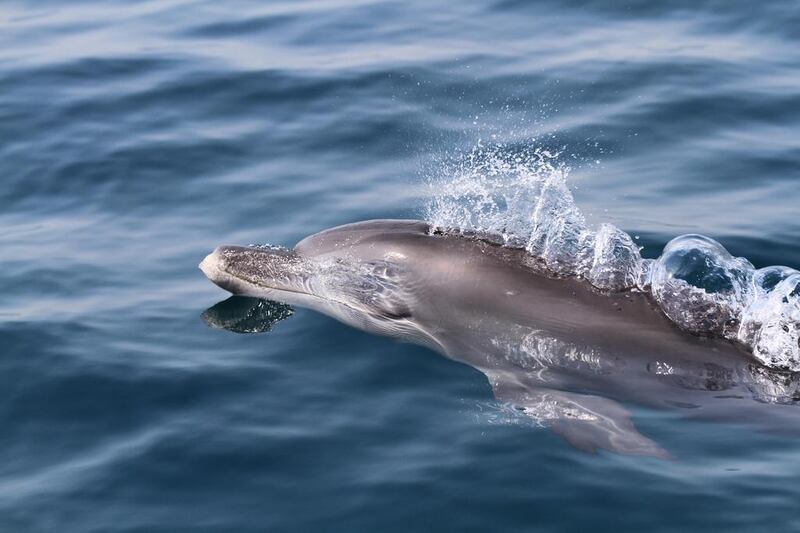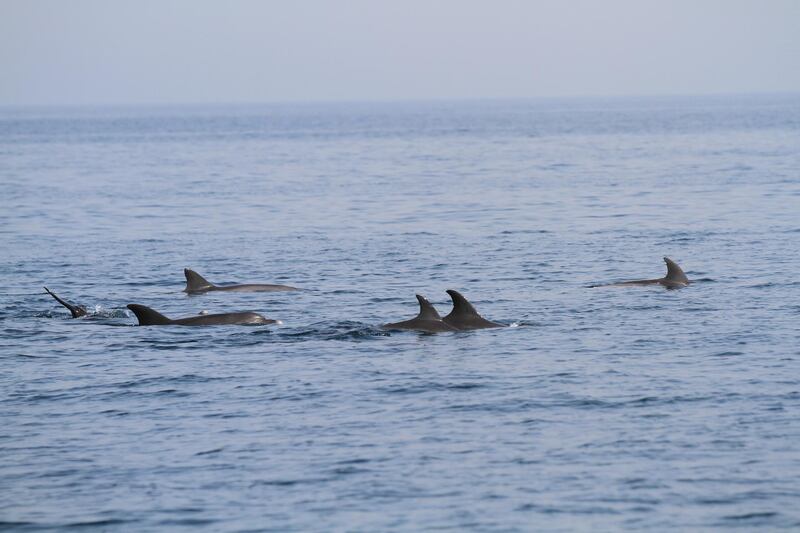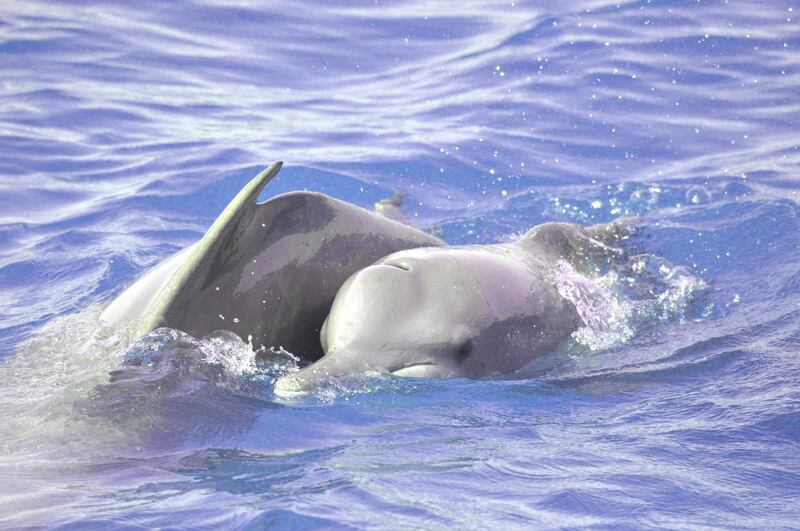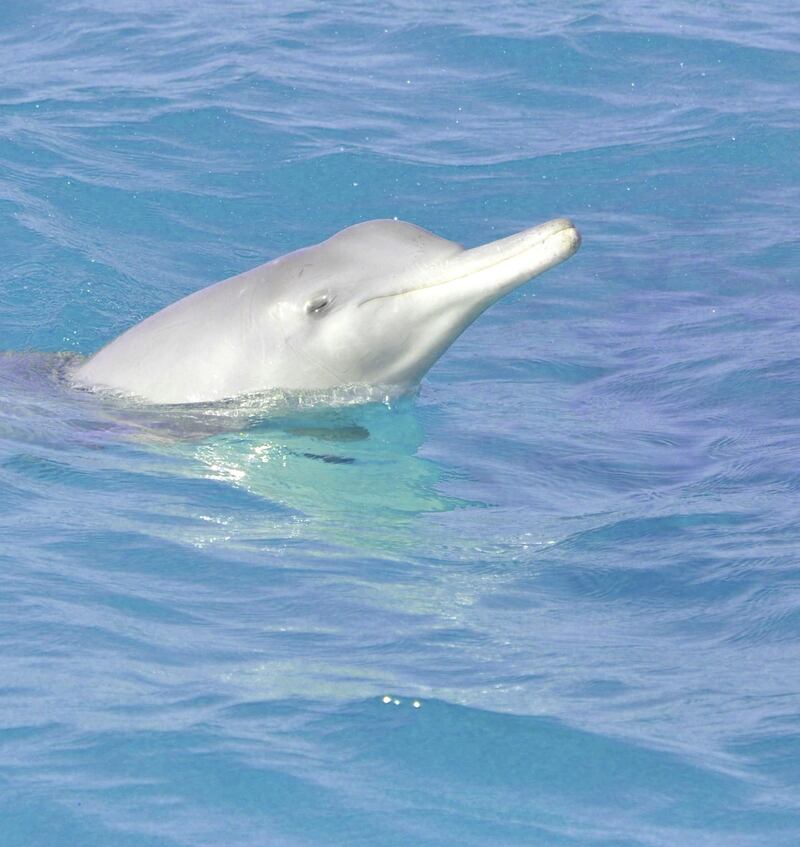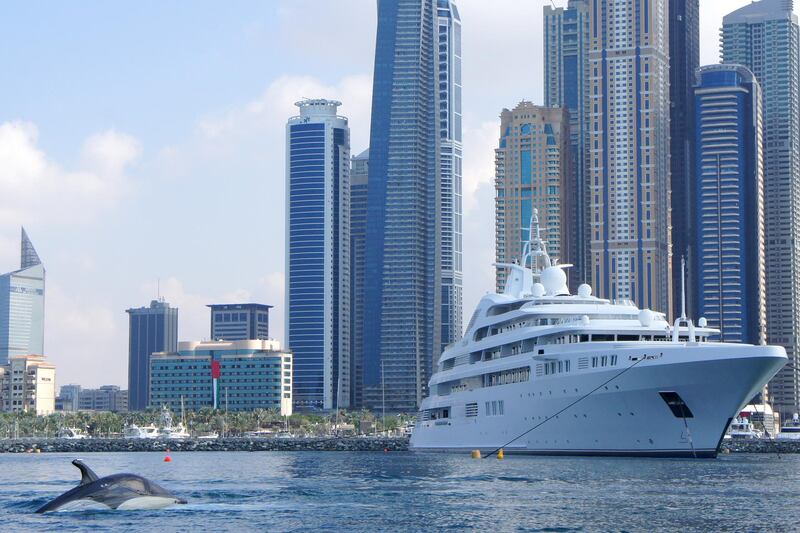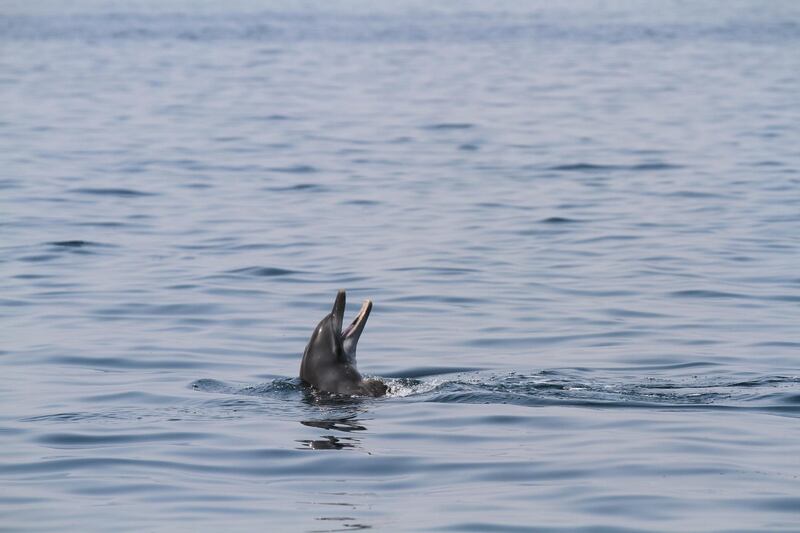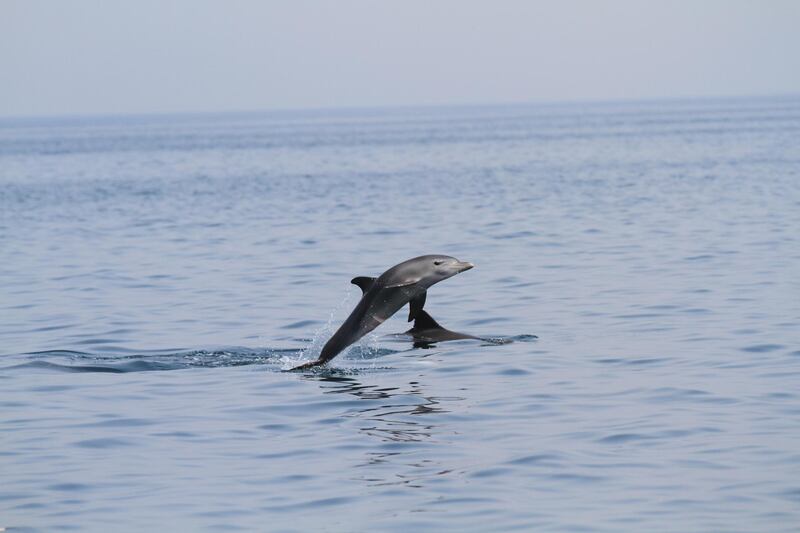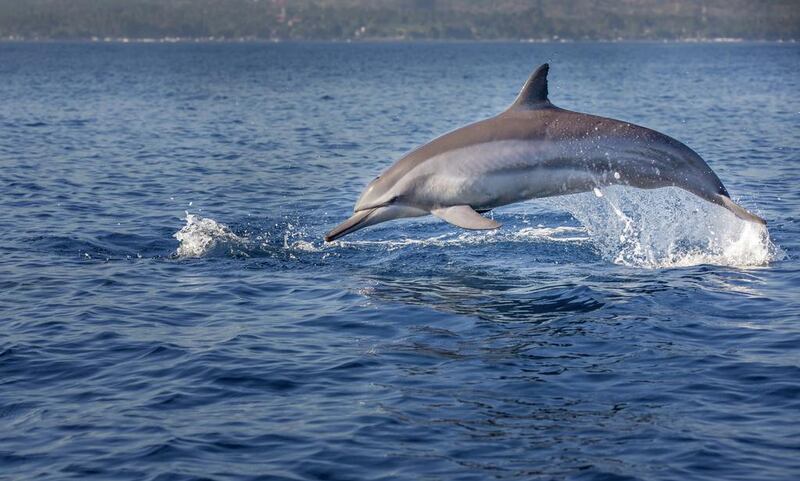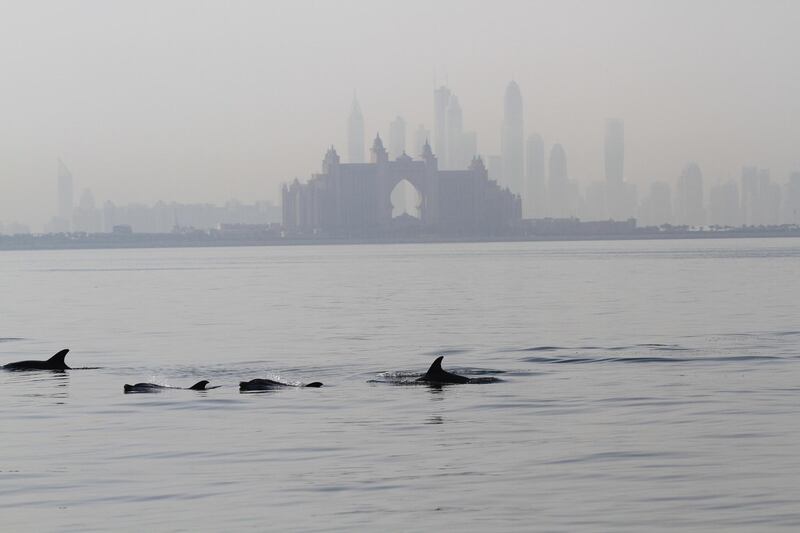Off the coast of Dubai, a team of scientists have launched a boat-based survey to gather data about the local dolphin population in the emirate.
The year-long project aims to assess the different species in the water, as well as population structure and trends.
Led by Dr Ada Natoli, assistant professor at the College of Natural and Health Science at Zayed University, researchers will span 1,000 km2 of Dubai coastal waters.
So far, the Dubai Dolphin Survey 2021-22 has recorded several species swimming below the water’s surface including four sightings of Indo-Pacific bottlenose dolphins and two sightings of the rare and elusive Indo-Pacific finless porpoise.
The team is also calling on the help of the public to collect vital data on the aquatic mammals.
“To compliment the boat survey, we are also rebooting the ‘Report a Sighting’ citizen science campaign, to encourage the public and people who operate vessels to report sightings of whales and dolphins,” said Dr Natoli who is also the founder and director of UAE Dolphin Project.
“We will host a series of public virtual awareness sessions to ensure people are collecting the right information and reporting it, which will most certainly increase our understanding of these animals in our waters.”
Sightings of whales and dolphins can be reported on the UAE Dolphin Project website (www.uaedolphinproject.org) Instagram, Facebook and WhatsApp or by email at sighting@uaedolphinproject.org.
This latest project, supported by Atlantis The Palm and F3 Marine, is the first survey of its kind conducted in the area in eight years.
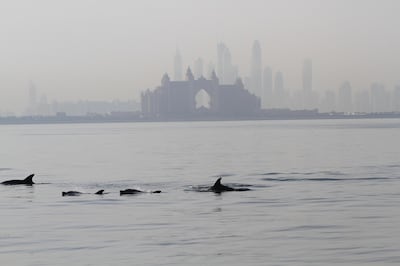
The last survey recorded numerous sightings of dolphins which are listed as “threatened” on the the International Union for Conservation of Nature (IUCN) red list.
For the 2013/2014 mission, scientists spotted regular pods of the Indo-Pacific bottlenose dolphin, the Indian Ocean Humpback dolphin, and one porpoise, the Indo-Pacific finless porpoise.
Using photos of dolphin’s dorsal fins, the team completed a photo-identification catalogue of individuals.
For this latest project, which was launched four weeks ago, the team will try to identify individuals from the previous survey and gather a more precise idea of the residency and population size of dolphins along Dubai’s coast.
Professor Fares Howari, dean of the College of Natural and Health Sciences at Zayed University, said whales and dolphins play a crucial role in the marine ecosystem.
"Being at the top of the marine food chain, together with other species such as sharks and top marine predators, they are ecological Indicators of the status of the sea," he said.
"The current project will boost marine science and marine biology research lines at ZU.
"The project will provide accurate information on dolphin population and their distribution in the Gulf."
Dolphins are no stranger to UAE waters. With several animal conservation agencies working to protect marine mammals in the country, organisations regularly post videos of dolphin pods spotted off the coast of Fujairah, Dubai and Abu Dhabi.
In June last year, a pod of humpback dolphins were spotted in shallow waters on Saadiyat Island.
The group were seen swimming close to the shore in a video shared on the Environment Agency Abu Dhabi’s Twitter feed.
